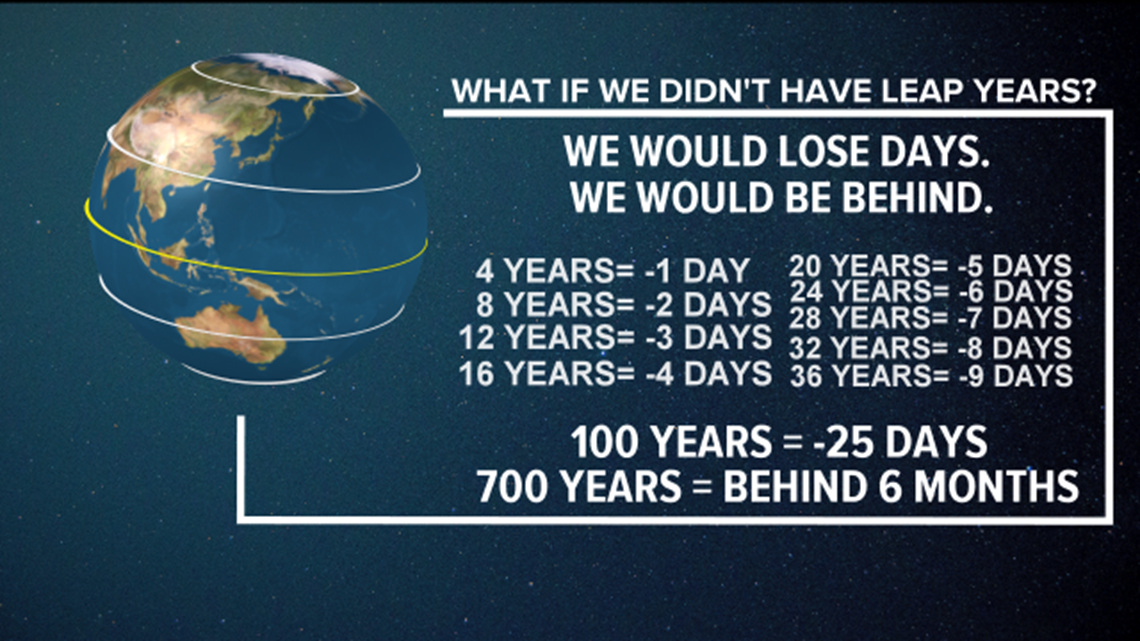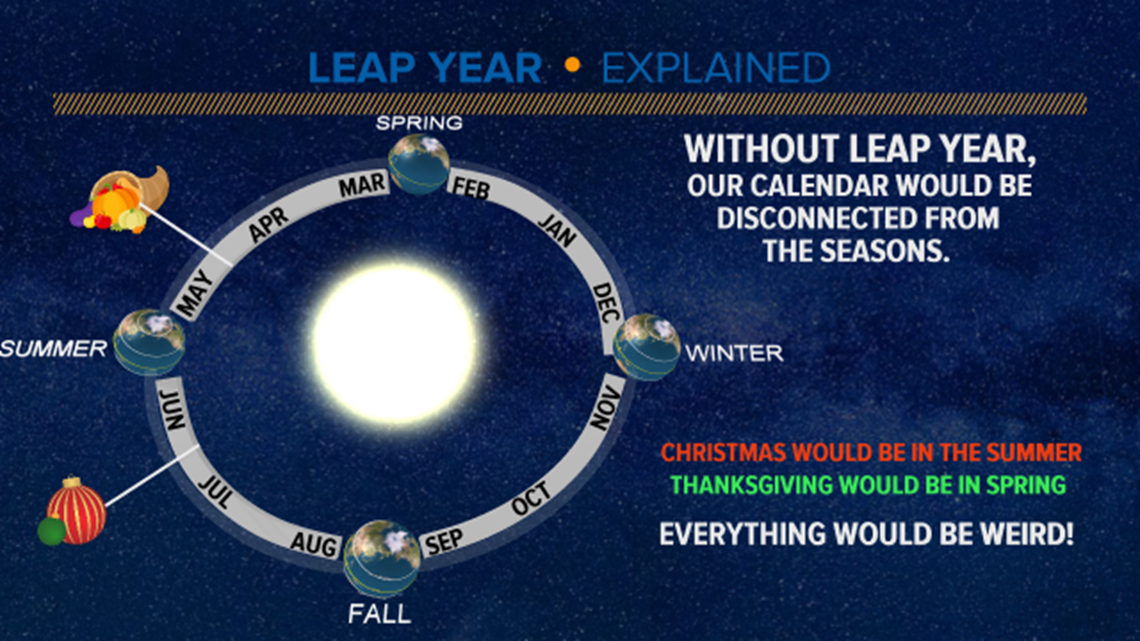February 29th is a day we see every four years. The last leap year was 2016 and here we are. To elaborate a little, a leap year is a misnomer. It’s not referring to “year leaping” but adding an extra day to February.
It takes exactly 365.24 days to orbit around the sun. That extra .24 adds up over time and if we didn’t correct for this, it would throw off our calendar. Moreover, this is why we have leap years. Every 4 years, we add up all that extra time which is accounted for in that extra day in February (Feb 29). However, what would happen if we didn’t implement leap days? In short, over time, our calendar would be disconnected from the seasons.


If we didn’t have leap years, every 4 years, we would lose one day and this would put us behind on the calendar year. With this being said, it wouldn’t be until after 700 years of not implementing leap year would we see the most dramatic change. After 700 years, Christmas would fall in summer and Thanksgiving would land in spring. This would not be a problem for our generation nor for the next couple generations. It would be generations down the line that would live in a world where it would be hot during winter with holidays scattered throughout the year. Implementing leap year is pivotal in keeping the calendar balanced.



